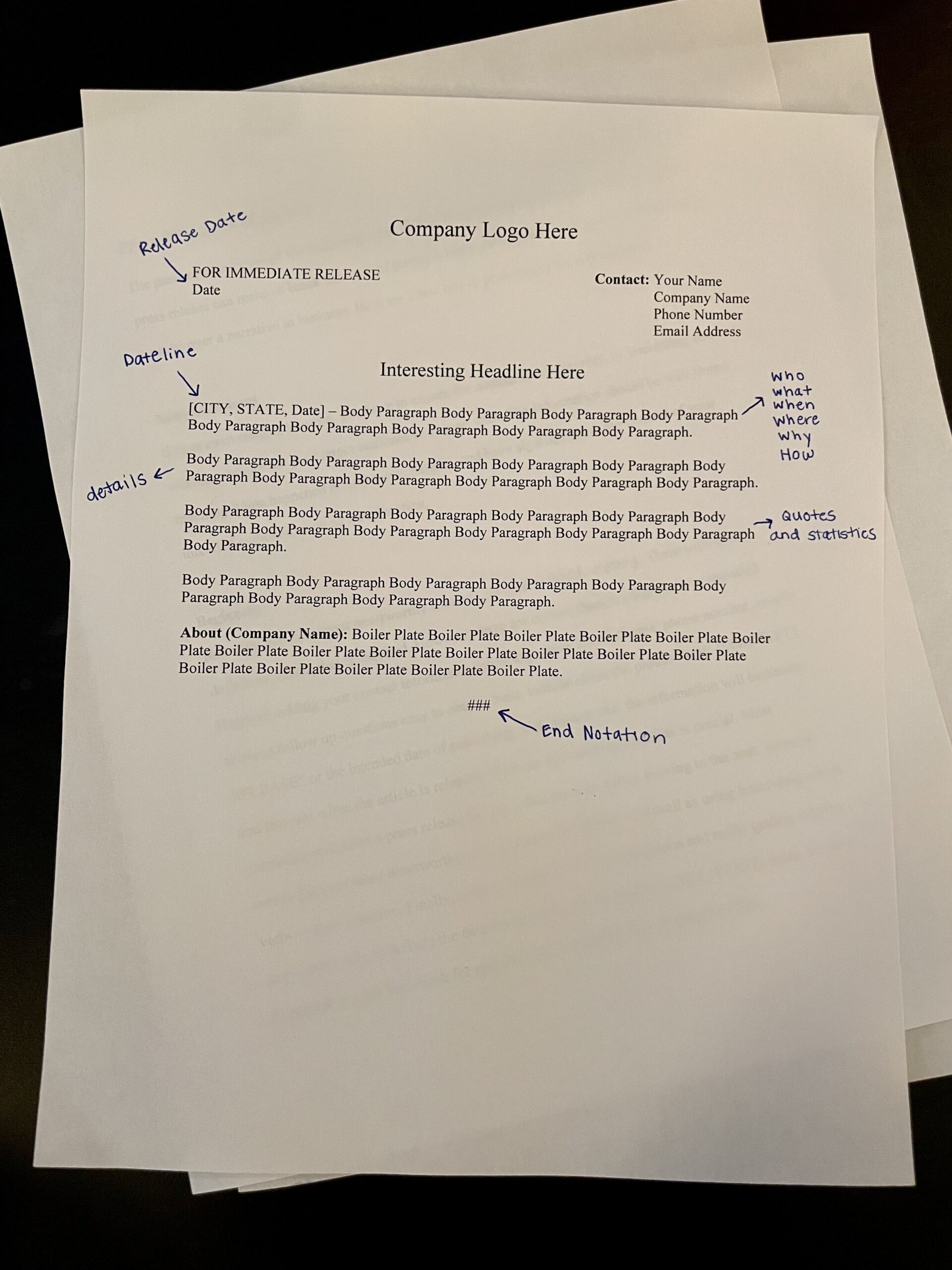Press Release Writing 101
By Julia Gibson
The press release is one of the most important deliverables a PR professional can create. Students must learn the format required that differs from traditional essays or journalistic writing. The quality of a press release can make or break the odds of getting a story published by a journalist and having control over a business’s narrative. Here are a few tips to perfect your press release writing:
Newsworthiness

Using a sample press release format can be very helpful. This is just
one example of an acceptable, professional format used to write and distribute to different media outlets and journalists.
Before you even start to write, you have to ensure that the content is newsworthy or interesting and relevant enough for your target audience to engage with. This first requires research of who your target audience is and what content they prefer. The information should be well-timed, meaning it just happened or is about to happen, and should be significant and applicable to the context of your intended audience, such as being close to their location.
Introduction
Now that you have your newsworthy content, it’s time to start formatting. There isn’t one definitive format that is required. However, there are certain elements that must be included. Begin by adding your contact information including the company name, your name, phone number and email. Next, include either the phrase “FOR IMMEDIATE RELEASE” or the intended date of publishing. This ensures that the information will be timely and relevant when the article is released. Next, an eye-catching headline is crucial. Most journalists will skim a press release for just a few seconds before moving onto the next, so make sure to put your most newsworthy information in the headline and incorporate unique action verbs to grab attention. Finally, before starting your body paragraphs and really getting into the story, make sure to include the dateline. Be sure to consult the AP Stylebook for specific rules regarding abbreviations of cities, dates and general formatting.
Body
The body paragraphs are where you can begin to flesh out the content and explain the facts. Start with the most essential information in the first paragraph. Do your best to answer the most important questions: who, what, when, where, why and how. After addressing these basic questions, explain further details and give relevant context in later paragraphs. Next, include compelling quotes from important figures who are involved. Avoid any industry language that may be difficult to understand for those who are not in the industry. Be sure to keep the information as formal and official as possible by avoiding any excessive adjectives or sales language. In summary, stick to the facts and let the story speak for itself.
Conclusion
A good press release should be relatively short and sweet, just around 300-400 words or one page. After your body paragraphs, include a boilerplate. This is a short, one paragraph biography about the company, explaining a little bit about what they do, where they operate, their mission statement and their history. Finally, make sure to distribute your press release to relevant media outlets and journalists. It is important to do research on the types of stories that a media outlet covers and their audience in order to increase the chance that they’ll be interested and willing to publish a story based on your press release.
Press release writing is a skill that all PR students must master in their classes and in the working world. Make sure to use resources such as the AP Stylebook to guide your writing in the right direction and establish a professional presence for any company or agency that you work for.